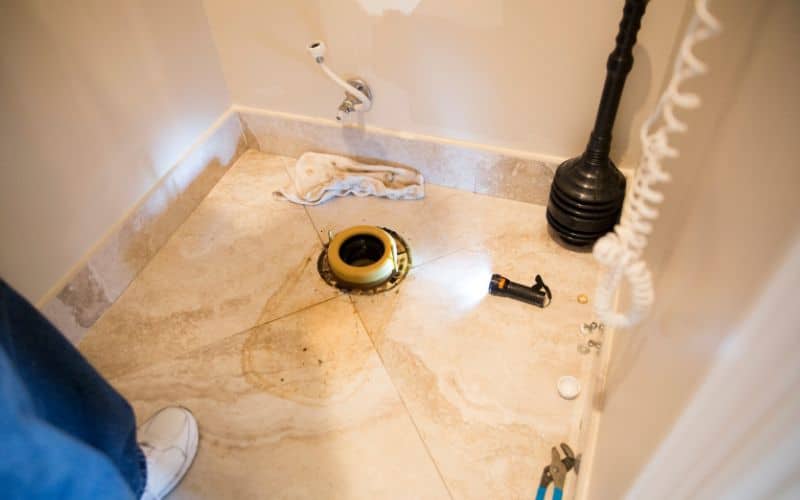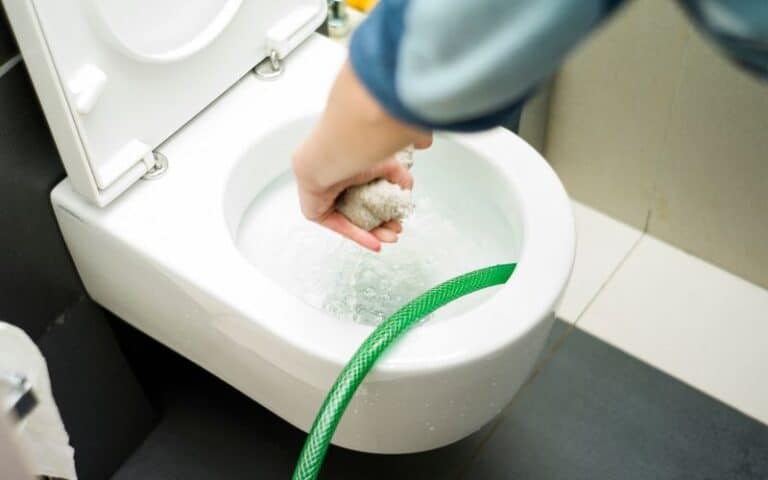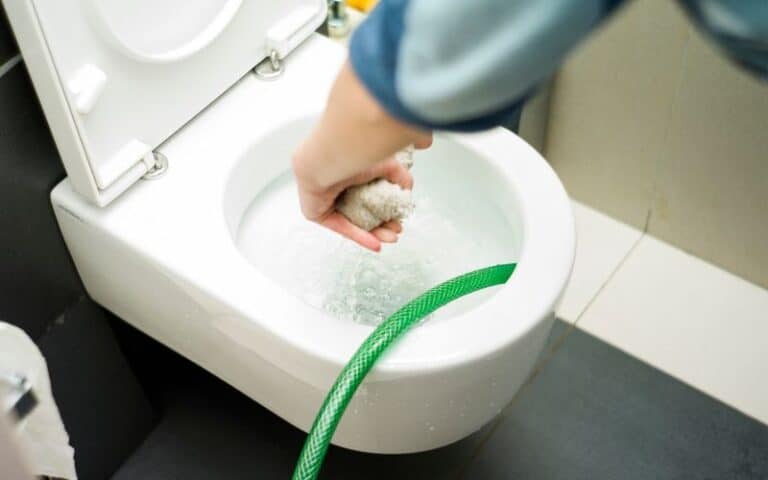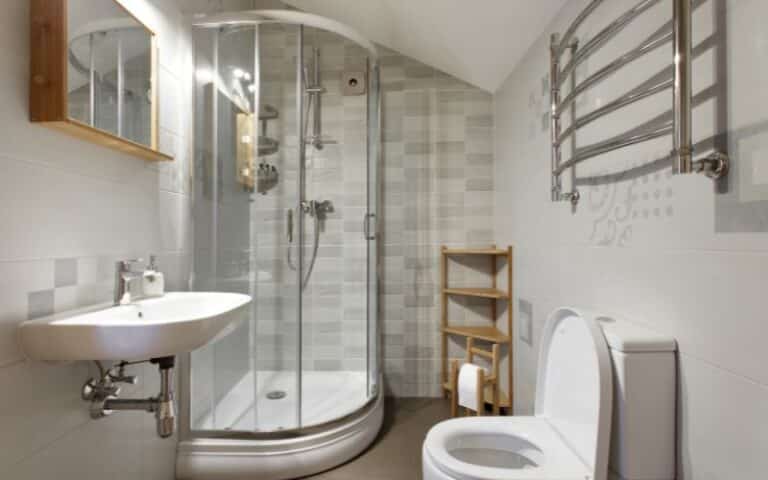The offset toilet flange is an important component of a plumbing system, but it can cause problems if you don’t install or maintain it properly.
Knowing what to look for and how to handle any issues with an offset toilet flange can save you time, money, and energy. However, it leaves you to wonder what the cause is.
So what problems can you encounter with your offset toilet flange so you can rectify it without resulting in something serious?
An offset toilet flange can cause various issues, from installation problems to leaks and clogs to structural damage in your home. However, you can easily fix these issues; you need to identify the problem before fixing it. Try troubleshooting it by tightening the flange and securing it to the floor properly; also, avoid things that’ll clog it.
In this article, I’ll explain why plumbers install the offset toilet flange, its problems, and the solution. I’ll explain whether removing the toilet or installing the offset toilet flange is best.
By the end, you’ll know how to easily fix the problems with your offset toilet flange and return it to working condition.
Why Do Plumbers Install Offset Toilet Flanges?

When installing a new toilet or replacing an existing one, plumbers may need to use an offset toilet flange.
They do that so they can install a toilet properly in a bathroom where the drain line is not centered directly beneath the toilet’s location.
This type of flange provides an additional offset from the main sewer line. It lets you place the toilet off-center to line up properly with the drain line without damaging the pipes.
The offset toilet flange is a specially designed adapter that connects the toilet to the drain line and allows for off-center placement.
There are a few reasons why a plumber might install an offset flange, including:
#1. Limited Space
In some bathrooms, there may not be enough space to install a toilet directly above the main sewer line.
An offset flange can move the toilet slightly to the side, providing the necessary clearance.
#2. Structural Issues
You can adjust your offset flange for this misalignment if you don’t center your main sewer line beneath the toilet.
#3. Older Homes
Older homes may have plumbing that doesn’t conform to modern standards. An offset flange can connect an older toilet to a newer sewer line.
If your bathroom has an off-center drain line and you’re wondering how to install a toilet without causing damage to the pipes, use an offset toilet flange.
Properly installing an offset flange lets you align your toilet with the drain line without issues.
To avoid issues, hire a professional plumber to ensure they install the flange correctly and that the toilet will work efficiently.
An offset toilet flange can be useful when a traditional flange doesn’t work. However, there are also some potential problems to be aware of, as we’ll discuss in the next section.
5 Common Problems with Offset Toilet Flange with Solutions
The offset toilet flange has benefits but isn’t without problems.
Here are five common problems you can experience with an offset toilet flange with their solution.
#1. Leaks Around the Base
Leaking is a problem with an offset toilet flange around the toilet’s base.
That can happen if you do not properly seal the wax ring between the toilet and the flange, causing water to seep and unpleasant odors.
To solve this issue, replace the wax ring with a new one, ensuring it is seated securely.
You can ensure the offset flange is securely attached to the existing flange and the wax ring is properly positioned and compressed between the flanges.
Applying a small amount of plumber’s putty around the toilet’s base can also help create a tighter seal.
#2. Height Discrepancy
The offset flange can cause a height difference between the toilet and the bathroom floor.
The problem with your offset flange can cause a leak. If you install the flange raising or lowering your toilet so much, it can affect its stability.
To fix this height problem, install toilet flange extenders. You can use them to raise the height of the flange to match the toilet and ensure you properly seal the toilet with the flange.
Make sure to choose an extender ring compatible with your specific offset flange and toilet model.
#3. Uneven or Wobbly Toilet
An uneven or wobbly toilet is one of the most common problems with an offset toilet flange.
That can happen if you don’t properly align the offset flange with the toilet or if the offset is too significant.
To fix this issue, try adjusting the bolts that secure the toilet to the floor. You can use shims or leveling wedges to stabilize the toilet.
Place the shims or wedges under the toilet’s base until it is level and secure. Sometimes, you need to call your plumber or modify your plumbing system.
If the problem persists, you may need to reinstall the offset flange or consider moving the toilet to a different location.
#4. Difficulty in Flushing
An offset flange can sometimes cause issues with the toilet’s flushing mechanism. That can result in a weak or incomplete flush, leading to improper disposal of clogs or waste.
Sometimes, your toilet clogs because you didn’t properly tighten the offset flange.
One possible solution is to ensure you properly fill the toilet tank and the flapper valve works correctly. Also, ensure you tighten your toilet flange properly to the toilet seat.
If these measures don’t resolve the problem, consider installing a different offset flange or relocating the toilet.
#5. Limited Design Options
One drawback of using an offset toilet flange is limiting your design options when choosing a new toilet.
Since the offset flange raises the toilet’s base higher than a standard flange, you may find that certain toilets with lower profiles are not compatible.
If you want a specific toilet design and face this issue, consider moving the toilet entirely instead of an offset flange.
Remember, it’s always best to consult a professional plumber if you encounter any problems with your offset toilet flange.
They will have the expertise and knowledge to provide tailored solutions to your situation. With this guide, you also can check and resolve your offset toilet flange problems.
Should You Install an Offset Flange or Move the Toilet Completely?
When faced with an offset toilet flange problem, you may wonder whether installing or completely moving the toilet is better. The answer is it depends on the situation at hand.
Both options have pros and cons, so it is important to weigh them before deciding.
Installing an offset flange can be more cost-effective than moving the entire toilet.
It involves placing an offset flange between the existing flange and the toilet, which allows for a slight adjustment in the positioning of the toilet.
That can be useful if the offset is insignificant and easily corrected with a minor adjustment.
One advantage of installing an offset flange is that it requires less labor and time compared to moving the toilet.
If the offset is minimal and the toilet is in good condition, an offset flange may be more convenient than removing and reinstalling the entire toilet.
Also, moving the toilet will be difficult if your bathroom is small, so an offset toilet flange is the best option.
However, there are some situations where completely moving the toilet might be a better choice.
If the offset is too large or the existing toilet is damaged or old, it may be more practical to relocate the toilet.
Moving the toilet allows for a more precise adjustment, ensuring it is properly aligned and functioning optimally.
Another factor to consider is the overall condition of the plumbing system.
If the offset flange problem is recurring or other underlying plumbing problems, it may be worth investing in a complete toilet relocation.
That will not only fix the offset problem but also address any other potential issues that could arise.
I’ll summarize some points in the tables below to help you decide between using an offset toilet flange or moving your toilet.
The table below shows the pros of using an offset toilet flange vs. moving the toilet:
| Offset Toilet Flange | Moving the Toilet |
|---|---|
| It is cheaper than moving the toilet. | You get perfect alignment with the pipe this way. |
| It saves time and is easy to install. | You get more space in your bathroom. |
| It helps with moving your toilet in any direction a few inches. |
The table below shows the cons of using an offset toilet flange vs. moving the toilet.
| Offset Toilet Flange | Moving the Toilet |
|---|---|
| It can cause stability issues. | Doing this is more expensive. |
| It may alter the bathroom aesthetics. | It is time-consuming. |
| It cannot offset serious toilet misalignment as adjustments are limited. | You might destroy your bathroom aesthetics to do it. |
Ultimately, deciding between installing an offset flange or moving the toilet depends on your situation’s specific circumstances and needs. It is advisable to consult with a professional.






